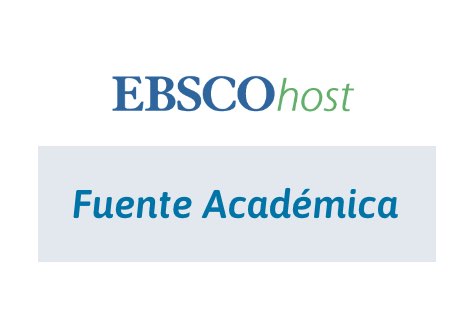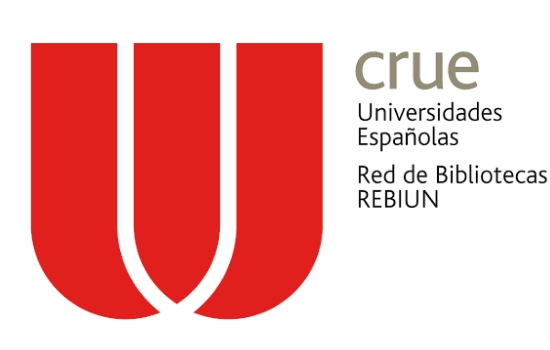Explorar conexões entre matemática local e matemática global
Palabras clave:
Matemática Local, Matemática Global, Conexões Matemáticas, Quadriláteros, Local Mathematics, Global Mathematics, Mathematical Connections, QuadrilateralsResumen
Resumo
A integração de aspectos culturais nos currículos é um meio de legitimar vivências dos alunos e de responder à diversidade cultural, em prol de uma maior equidade na aprendizagem matemática com significado (e.g. Bishop, 2005; Gerdes, 2007; Moreira, 2008). Neste artigo, pretendemos destacar o papel da matemática cultural no desenvolvimento da predisposição para estabelecer conexões matemáticas e na comunicação matemática. Tal objectivo enquadra-se numa investigação mais ampla (Latas, 2011), a qual seguiu uma metodologia qualitativa, de natureza interpretativa, incidindo o processo de recolha de dados na observação participante, na entrevista, na análise documental e no desenho de um projecto curricular. A conceptualização do projecto seguiu uma abordagem etnomatemática e foi implementado numa turma de 7.º ano de escolaridade onde a professora desempenhou simultaneamente o papel de investigadora. Os resultados sugerem que os alunos: i) se apropriaram de práticas culturalmente distintas pela relação que estabeleceram com os seus conhecimentos prévios; ii) revelaram gradualmente maior predisposição para o estabelecimento de conexões matemáticas; iii) aprofundaram conhecimentos matemáticos locais e globais na interação entre ambas as dimensões.
Abstract
The integration of cultural aspects in the school curricula is a means to legitimize students’ experiences and to consider their cultural diversity in favor of equity for meaningful mathematical learning. (e.g. Bishop, 2005; Gerdes, 2007; Moreira, 2008). In this article we highlight the role of cultural mathematics to develop a predisposition to establish mathematical connections. This objective is framed in a broader research (Latas, 2011) in which a qualitative methodology of an interpretative nature was followed. Data was gathered using participant observation, interviews, documentary analysis and the design of a curricular project. The conceptualization of the project followed an ethnomathematical approach and it was implemented in a 7th grade class where the teacher played simultaneously the role of researcher. The results suggest that students: i) appropriated culturally distinct practices through the relationships that they established with their previous knowledge; ii) gradually revealed a greater predisposition to establishing mathematical connections; iii) deepened local and global mathematical knowledge by relating both dimensions.
Descargas
Citas
Abrantes, P., Serrazina, L., & Oliveira, I. (1999). A Matemática na Educação Básica. Lisboa: ME-DEB.
Adam, S., Alangui, W., & Barton, B. (2003). A comment on Rowlands and Carson ‘Where would formal academic mathematics stand in a curriculum informed by ethnomathematics? A critical review’. Educational Studies in Mathematics, 52(3), 327-335.
Adam, S. (2002). Ethnomathematics in the Maldivian curriculum. In M. de Monteiro (Ed.), Proceedings of the 2nd International Congress on Ethnomathematics (ICEM2) [CD-ROM]. Ouro Preto, Brasil: Lyrium Comunicação Ltda.
Alrø H., Skovsmose, O., & Valero P. (2009). Inter-viewing foreground: students’ motives for learning in a multicultural setting. Em M. César & K. Kumpulainen (Eds.), Social interactions in multicultural settings (pp. 13-37). Rotterdam: Sense publishers.
Adam, S. (2004). Ethnomathematical Ideas in the Curriculum. Mathematics Education Research Journal 16(2), 49-68.
Barton, B. (1996). Making sense in Ethnomathematics: Ethnomathematics is making sense. Educational Studies in Mathematics, 31, (pp. 201-233). Netherlands: Kluwer Academic Publishers.
Begg, A. (2001). Ethnomathematics: why, and what else? [Versão electrónica]. ZDM – The International Journal on Mathematics Education. 33(3), 71-74.
Bishop, A. J. (1997). Educating the mathematical enculturators. (Comunicação apresentada em ICMI China Regional Conference, Shanghai, China, Agosto 1994). Papua New Guinea Journal of Teacher Education. 4(2), 17-20.
Bishop, A. (2005). Aproximación sociocultural a la educación matemática. Colombia: Universidad del Valle.
Blanco-Álvarez, H., Parra, A. (2009). Entrevista al profesor Alan Bishop [versão electrónica]. Revista Latinoamericana de Etnomatemática, 2(1), 69-74.
Boaler, J. (1993). The role of contexts in the mathematics classroom: do they make mathematics more “real”? For the Learning of Mathematics, 13(2), 12-17.
Boavida, A. M., Paiva, A. L., Vale, I., & Pimentel, T. (2008). A experiência matemática no Ensino Básico. Lisboa: ME- DGIDC.
Breda, A., Serrazina, L., Menezes, L., Sousa, H., & Oliveira, P. (2011). Geometria e medida no Ensino Básico. Lisboa: ME- DGIDC.
D‘Ambrósio, U. (1993). Etnomatemática: arte ou técnica de explicar e conhecer. 2ª ed. São Paulo: Ática S.A.
D’Ambrosio, U. (2001).What is ethnomathematics, and how can it help children in schools? [Versão electrónica]. Teaching Children Mathematics 7(6), 308-311.
De Villiers, M. (1994). The role and function of a hierarchical classification of quadrilaterals. For the Learning of Mathematics, 14(1), 11-18.
Gerdes, P. (1992). Sobre o despertar do pensamento geométrico. Curitiba: Universidade Federal de Panamá.
Gerdes, p. (1997). On culture, geometrical thinking and mathematics education. In A. Powell & M. Frankenstein (Eds), Ethnomathematics: Challenging eurocentrism in mathematics education (pp. 223-247). New York: SUNY Press.
Gerdes, P. (2007). Etnomatemática - Reflexões sobre a diversidade cultural. Ribeirão: Edições Húmus.
Latas, J. (2011). O reconhecimento e a exploração da Matemática cultural: uma abordagem etnomatemática com alunos do 7.º ano de escolaridade. Tese de Mestrado. Universidade de Évora.
McGlone, C. (2008). The role of culturally-based mathematics in the general mathematics curriculum – A case for presenting culturally-based mathematics lessons to all students. In 11th International Conference on Mathematical Education, Julho, 2008. México: Monterreal.
ME-DEB (2001). Currículo Nacional do Ensino Básico – Competências essenciais. Lisboa: DEB, ME.
ME-DGIDC (2007). Programa de matemática do ensino básico. Lisboa: ME-DGIDC.
Moreira, D. (2002). Educação Matemática, comunidades e mudança social. In D. Moreira, C. Lopes, I. Oliveira, J. M. Matos & L. Vicente, Matemática e Comunidades – A diversidade social no ensino-aprendizagem da Matemática (pp. 9-25). Lisboa: I.I.E. e S.P.C.E..
Moreira, D. (2003). A Matemática na educação familiar: Memórias escolares, ideias sobre a Matemática e relação educativa em grupos domésticos de baixa escolaridade. Quadrante, 12(2), 3-23.
Moreira, D. (2007). Filling the gap between global and local mathematics [versão electrónica]. In ERME (European Society for Resaerch in Mathematics Education) & Department of Education, University of Cyprus (Eds), Proceedings of the Fifth Internacional Conference of the European Research Association on Mathematics Education (pp.1587-1596).
Moreira, D. (2008). Educação matemática para a sociedade multicultural. In P. Palhares (coord.). Etnomatemática – Um olhar sobre a diversidade cultural e a aprendizagem da Matemática (pp. 47 – 65). Ribeirão: Edições Húmus.
NCTM (2007). Princípios e normas para a Matemática escolar. Lisboa: APM.
Ponte, J. P., Brocardo, J., & Oliveira, H. (2003). Investigações no currículo. In J. P. Ponte, J. Brocardo e Oliveira, H. (Eds.), Investigações matemáticas na sala de aula (pp.55-70). Belo Horizonte: Autêntica.
Ponte, J. P., Oliveira, P., & Candeias, N. (2009). Triângulos e quadriláteros: Materiais de apoio ao professor. Acedido em 20 de janeiro de 2012 de http://area.dgidc.min-edu.pt/materiais_NPMEB/002_Sequencia_Geometria_TrianguloseQuadrilateros_NPMEB_3c%28actual17maio2010.pdf
Skovsmose, O. (2002). Students’ Foreground and the Politics of Learning Obstacles. In M. de Monteiro (Ed.), Proceedings of the 2nd International Congress on Ethnomathematics (ICEM2) [CD-ROM]. Ouro Preto, Brasil: Lyrium Comunicação Ltda.
Rivera, F., Becker, J. (2007). Ethnomathematics in the global episteme: quo vadis?. Em B. Atweh et al. (Eds.), Internationalisation and globalisation in Mathematics ans Science Education (pp. 209-225). Dordrecht: Springer.
Zaslavky, C. (1988). Integrating Mathematics with the study of cultural traditions. In International Conference on Mathematical Education, 27 Julho – 3Agosto,1988. Hungria: Budapeste.
Zaslavky, C. (2002). Exploring world cultures in math class. [Versão electrónica]. Educational Leadership, 60(2), 66-69.
Descargas
Publicado
Cómo citar
Número
Sección
Licencia
Derechos de autor
Una vez que el artículo es aceptado por la Revista Latinoamericana de Etnomatemática, los/as autores ceden los derechos para publicar y distribuir el texto electrónicamente, así como para archivarlo y hacerlo accesible en línea.
Los autores podrán distribuir su propio material sin solicitar permiso a la Revista Latinoamericana de Etnomatemática, siempre que se mencione que la versión original se encuentra en https://revista.etnomatematica.org
Copyright © 2008, Revista Latinoamericana de Etnomatemática
Todos los contenidos de la Revista Latinoamericana de Etnomatemática se publican bajo la Licencia Creative Commons Atribución 4.0 Internacional y pueden ser usados gratuitamente dando los créditos a los autores y a la Revista, como lo establece esta licencia.











